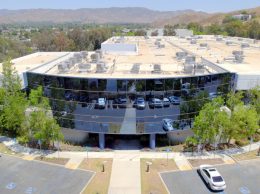Ventura County water agencies flooded with regulations
IN THIS ARTICLE
- Columns Topic
- Henry Dubroff Author
By Henry Dubroff Friday, January 27th, 2017

Henry Dubroff
Recharging West Ventura County’s depleted groundwater supplies is not as simple as collecting the deluge of rainwater flowing through the Santa Clara River.
New federal restrictions designed to protect the endangered steelhead trout are making it much harder for agencies like United Water Conservation District to divert the river’s flow for cities and farmers.
“This is a game changer,” United General Manager Mauricio Guardado, Jr. told me in a phone interview on Jan. 25. “It hasn’t been good.”
The year-old restrictions are also likely to make it harder to develop groundwater management plans and, eventually, a viable market for trading water across the heavily populated and heavily farmed areas of Fillmore, Santa Paula, Ventura, Oxnard and Port Hueneme.
While the rain and overflow from upstream reservoirs are helping to refill Lake Piru, which had become dangerously low, longer-term solutions for drought recovery are going to be far more complex.
During a presentation at the annual meeting of the Economic Development Collaborative of Ventura County on Jan. 19, Guardado and Calleguas Municipal Water District General Manager Susan Mulligan described some of the longer-term impacts of the drought.
Among them are more storm water capture and a relentless drive for water efficiency. “Everything is going to be different,” she said.
While parts of the state may go back to business as usual in a post-drought world, most of the Central Coast is facing a new reality.
Long-term solutions for water supplies are equally complex for South Santa Barbara County, where Lake Cachuma is not likely to be refilled in a single season and where the six-year drought is going to have permanent impacts.
For West Ventura County, one of those impacts is likely to be a permanent link between United’s facilities for water storage and Calleguas’ access to the state water supplies now being used in Simi Valley and the East County.
On Jan. 23, the Ventura City Council considered a $592,000 contract to begin the first studies for an interconnection project that would allow West Ventura County to access its state water allocation for the first time. Ventura’s public works department has been designated the lead agency for the multi-million dollar, multi-year project.
A second project involved a study to identify and allocate groundwater supplies among all the participants. Until that happens, said Guardado, the idea of a market for water in West Ventura County isn’t feasible.
Although the pilot project being set up by California Lutheran University’s Matthew Fienup shows promise, a permanent market depends on understanding the total supplies available.
“Once the allocations are established, a true market can be set up,” said Mulligan, who added that the idea of a fully tradeable water market is “daunting.”
It is possible, perhaps likely, that the new Trump administration will provide at least temporary waivers so that water utilities like United can get some relief from the new restrictions and develop ways to protect the steelhead without diverting so much supply. That would be better and far cheaper than at least one alternative, building a desalination facility that would be very expensive and have its own environmental impacts.
“Ventura County is still in extreme drought with a large hole to fill,” said Guardado. “If we can’t recover the groundwater basin, I don’t know what kind of market that looks like.”
For now, Ventura County’s nascent water market is waiting for regulatory relief, a big capital project and, as always, the heavy rains from another “Miracle March.”
• Reach Editor Henry Dubroff at [email protected].











